

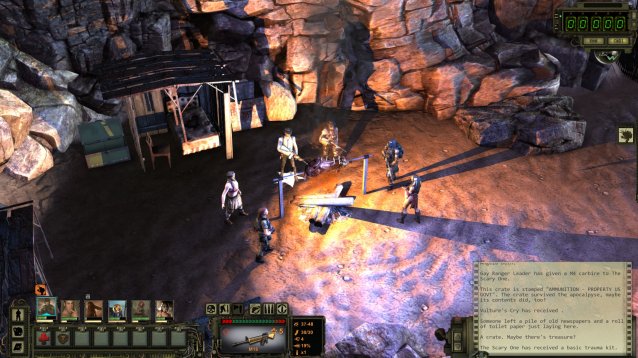
The story of the wasteland is not about what you want it to be. It is what it is, static and unchanging. Lately this has seemed a lost concept in the world of RPGs; that is, before 2014’s revival of the CRPG genre. Wasteland 2 is a big part of that revival, and at its core reminds us what is possible when an RPG doesn’t hold your hand.
One of my professional pet peeves is references to stuff like dice rolls and character stats as “role-playing elements,” as if the literal meaning of “role playing” has anything to do with those things. Yes, Wasteland 2 has dice rolls and character stats, but the appeal should not be either.
We’re talking about the sequel to Wasteland and successor to the Fallout games of old, here! Wasteland 2 is a game about wandering around the post-apocalyptic desert, getting into trouble, screwing up, and having things not really turn out the way you’d hoped. That’s the Fallout way, it’s the CRPG way, it’s the tabletop way. The fun is not in crafting the narrative through concrete choices, but rather not being in control. Wasteland 2 is an “Out Of Control Simulator.”
The difference between Wasteland and many CRPGs, however, is that in this game you have a stated mandate to be a force for good. You are a squad of Desert Rangers, a wasteland Jedi of sorts. Generally you’re not supposed to just murder folks. You can, just as, say, the police in real life can, but you probably shouldn’t. Also like real police, your efforts to keep the peace don’t always (or usually) go as planned, and situations can get out of hand very quickly.
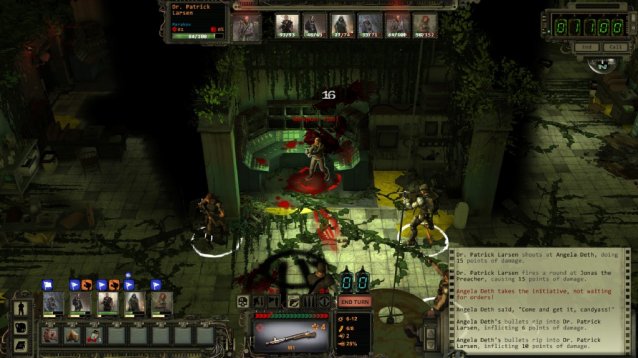
Let’s look at the way one particular situation I had played out. Much of Wasteland 2 involves visiting communities and trying to help them with stuff. Improve their situation, basically. Sometimes that could involve shooting up dictators, but diplomacy is also a good tactic. But sometimes which approach you’ll have to take is dictated by others.
For example, I entered a small commune in Los Angeles and wandered through chatting with folks. One of those people had been locked in a cage and was scheduled for execution, and he pleaded his case to me, but I took no action. I continued around town, meeting people, untIl I encountered the boss, who declared he wouldn’t talk to me because I had been seen speaking with their prisoner.
When I decided to live this commune, I was stopped by the town sheriff. The prisoner had escaped, and they decided my group of outsiders was suspicious. The sheriff demanded I leave one of my squad with them as a hostage while I track the prisoner down and bring him back, alive. I politely declined, which meant war, in Wasteland’s turn-based tactical system.
To be clear, these were not good people, and I had no ethical qualms with wiping out anyone who fired on me. Even so, that wasn’t how I wanted that to play out, but my hand was forced by something that was entirely out of my control.
Because Wasteland 2 is produced in the old CRPG tradition, that probably will happen a lot. Your squad members will have to be specialized; there are many skills you can have, but you can only be good at a few of them. There are three separate speech skills, for example, and if you want to be the ultimate manipulator you’re probably not going to be worth a damn in any other regard until the late game. And even if you have a full squad of seven with each member having unique specializations -- which is extremely unlikely -- you’re going to have some holes.
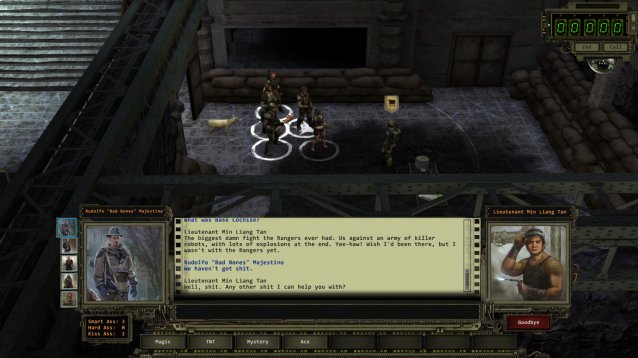
Permadeath throws an extra wrench into that as well. When your rangers are killed, they’re dead for good, and you’ll have to compensate for that. Opportunities to replenish your ranks abound, but you don’t have control over what skills these people have before they join you. A level 20 cyborg dude you just met is going to have 20 levels worth of skill points allotted already.
But that’s the thrill of the wasteland. Rolling with the punches, dealing with things as best you can when it all goes to hell--that’s why we’re playing. Or it should be. And to its credit, Wasteland 2 is excellent at throwing you curveballs.
Beneath the surface there are some technical complications. Wasteland 2 is not yet in its ideal form. I’ve encountered several bugs that damaged my ability to progress without reloading a save, but unfortunately Wasteland 2’s autosaves are spotty. You can set it to save every 15 minutes on top of other auto or manual saves you do but the option for smaller intervals would have been nice.
And there are also some strange occasional hiccups in the tactical combat. Generally, when it’s time to fight, you’re only going to have to battle opponents who are nearby -- obviously if you’re fighting dudes on a large map you probably wouldn’t have to have to fight all of them (like maybe 50 or more in some areas) in one continuous running battle because that would take a very long time and you can’t save during combat. But during one last fight I had in the commune I discussed previously, the game triggered an opponent on the other end of the map who I couldn’t see, and so I had to use turns to move my squad around the map until we found and shot him.
But when it’s working correctly, Wasteland 2 is stellar. The tactical combat is pretty standard, but challenging and only occasionally overwhelming (those are essential moments, to me). Learning to deal with everything that goes wrong as you wander the wastes is a thrill that makes it all the more satisfying when a plan actually does come together. Wasteland 2 is a Real Game, bro.
8 out of 10
Wasteland 2 was developed and published by inXile Entertainment. It was released on September 19th, 2014, and is available on PC for $39.99. A PC version of the game was provided by the publisher for this review.



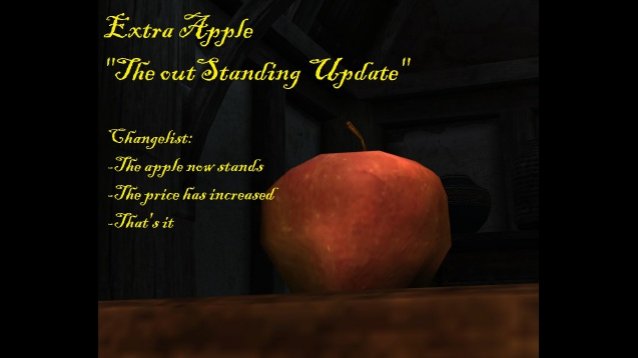
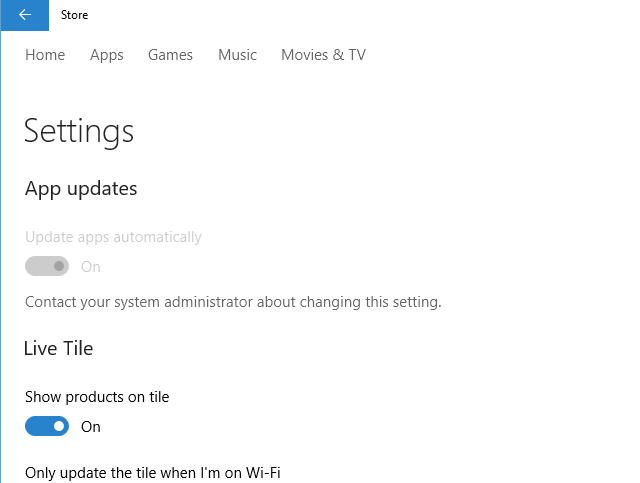 The 6 Best Ask the Experts Questions of 2015
The 6 Best Ask the Experts Questions of 2015 If Tim Burton Made Pokemon
If Tim Burton Made Pokemon Assassin’s Creed 3 - A Look at Design (E3)
Assassin’s Creed 3 - A Look at Design (E3) RE Revelations 2 Episode 4: Metamorphosis (PC) review
RE Revelations 2 Episode 4: Metamorphosis (PC) review Monster Hunter 4 Ultimate (MH4U) Red Khezu / Pink Rathian guide
Monster Hunter 4 Ultimate (MH4U) Red Khezu / Pink Rathian guide